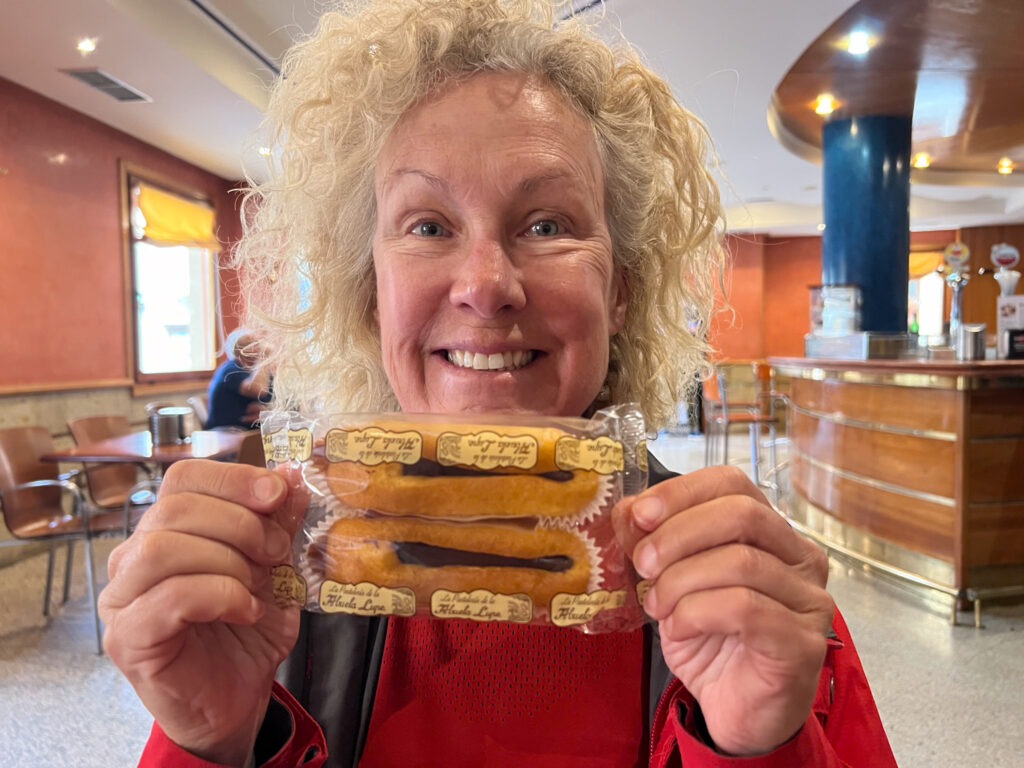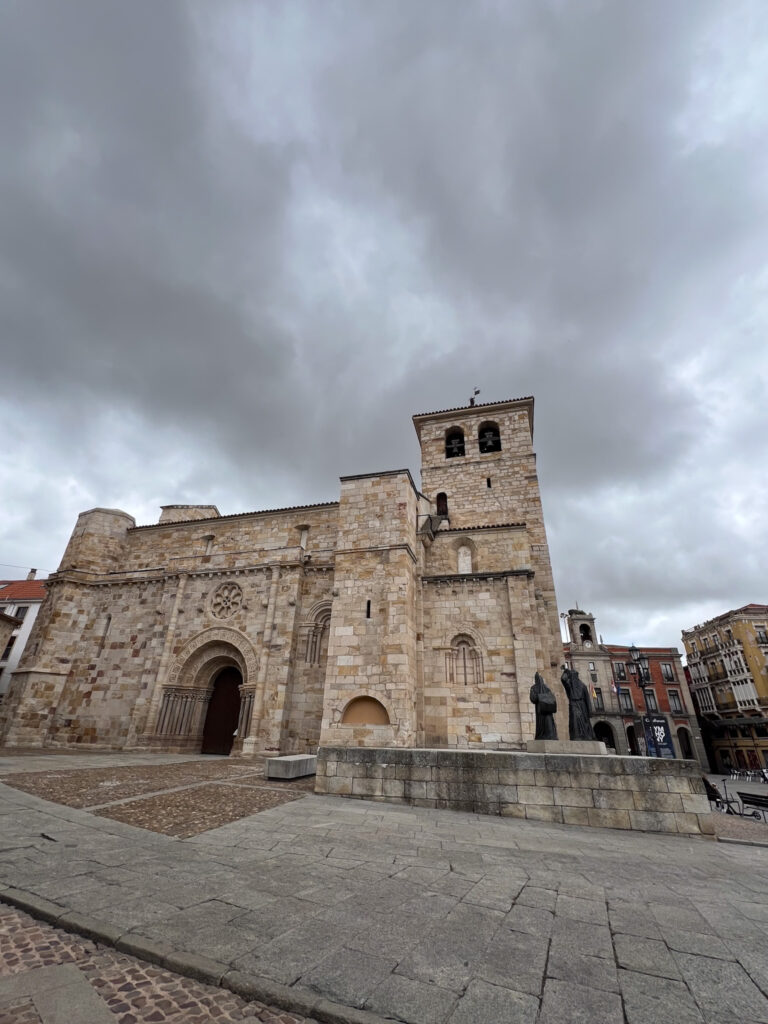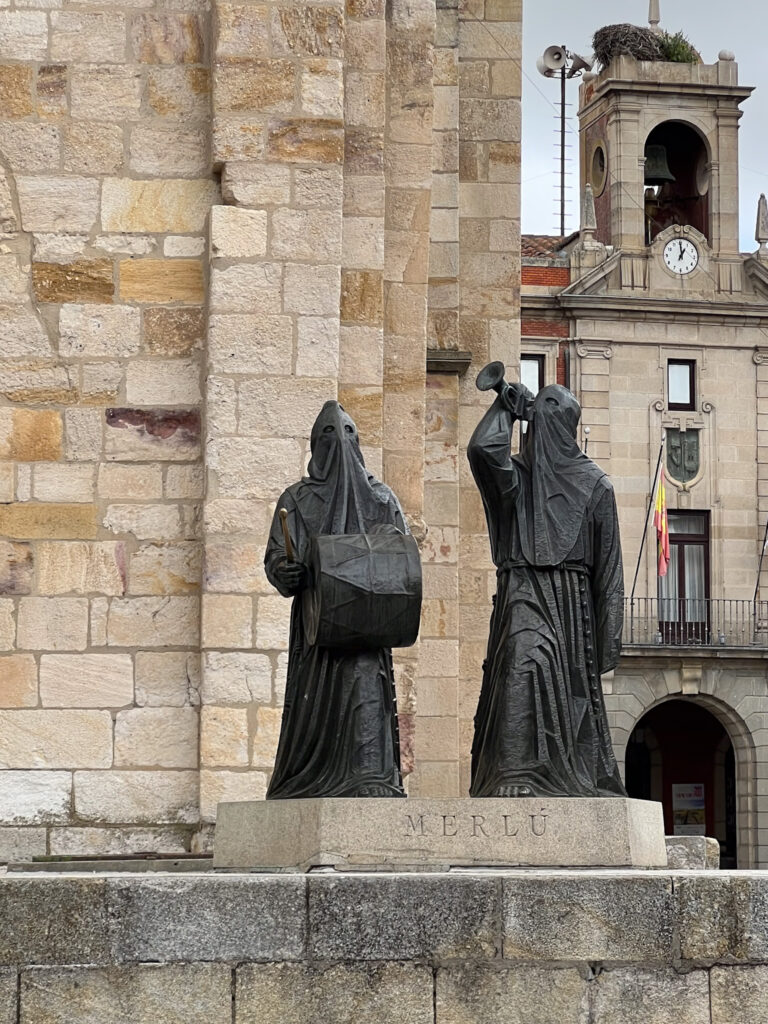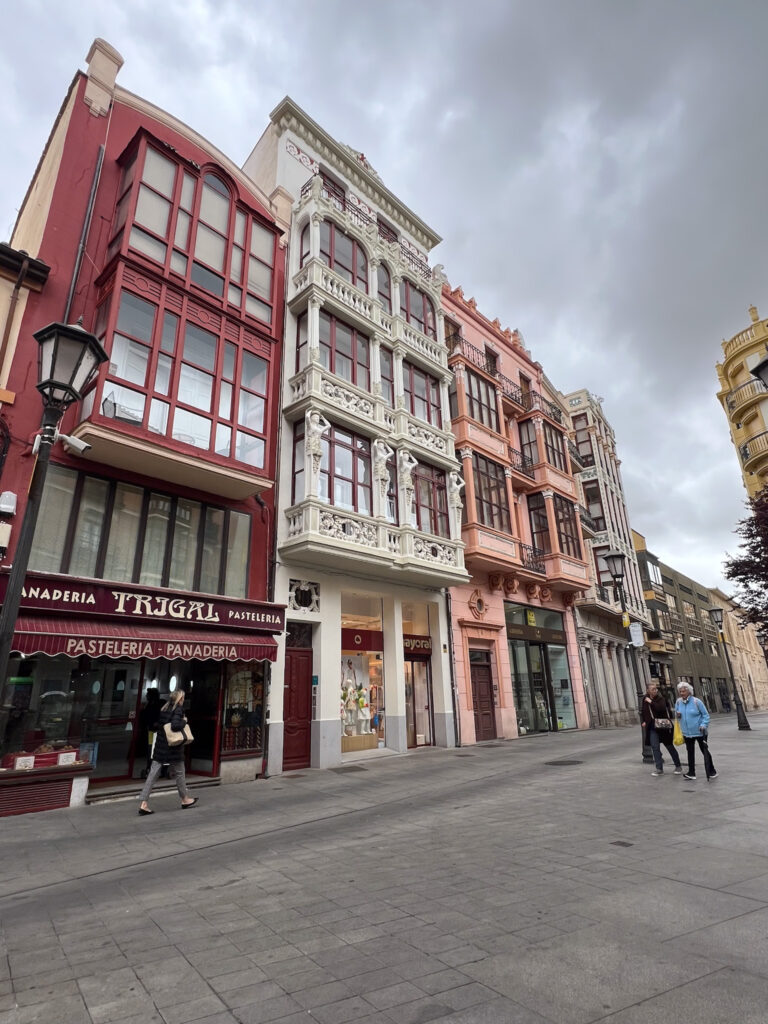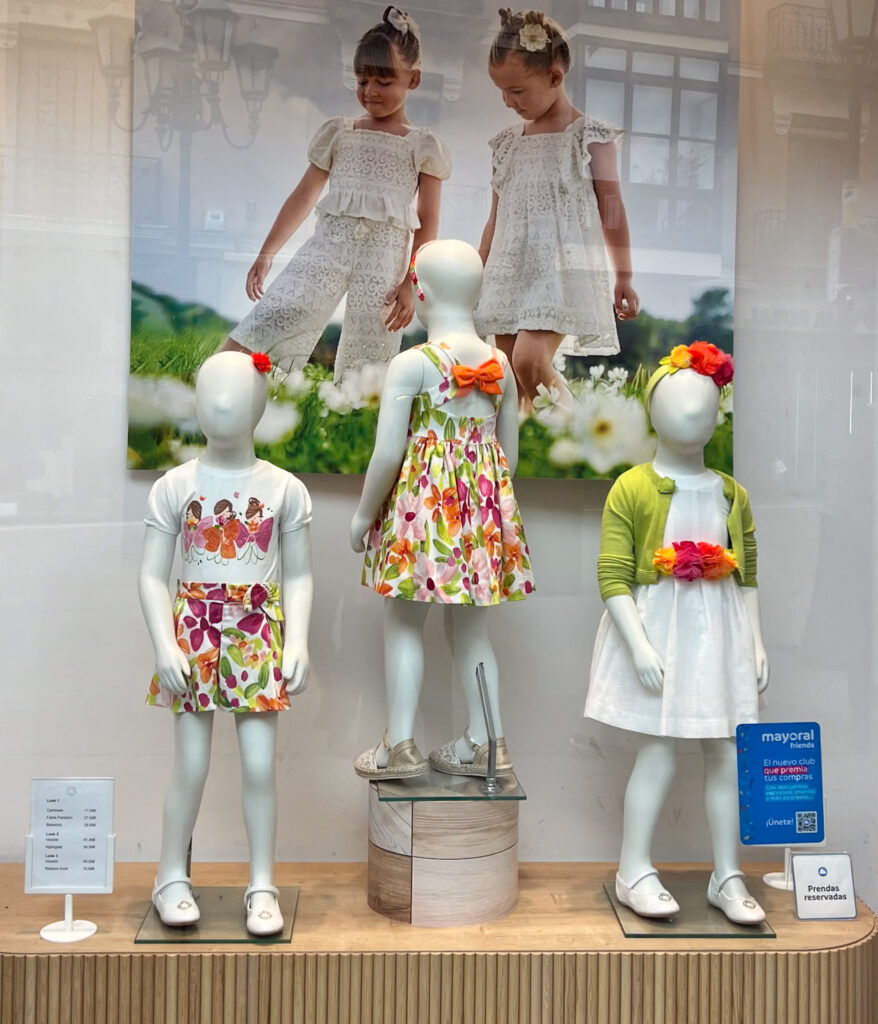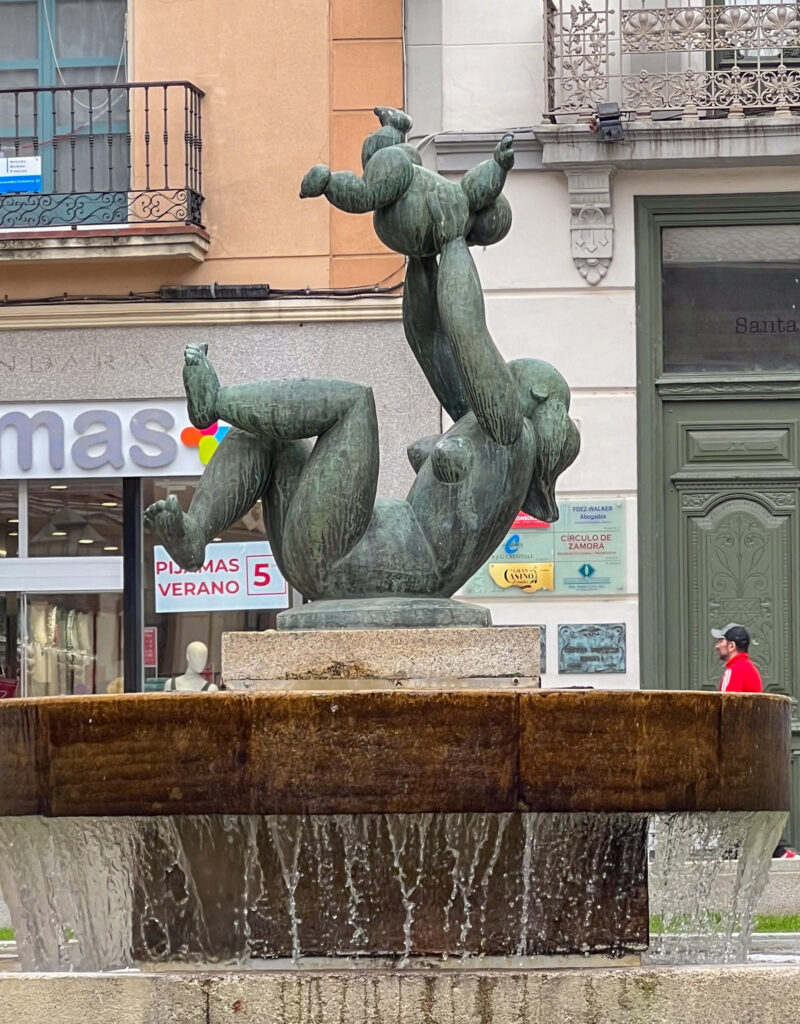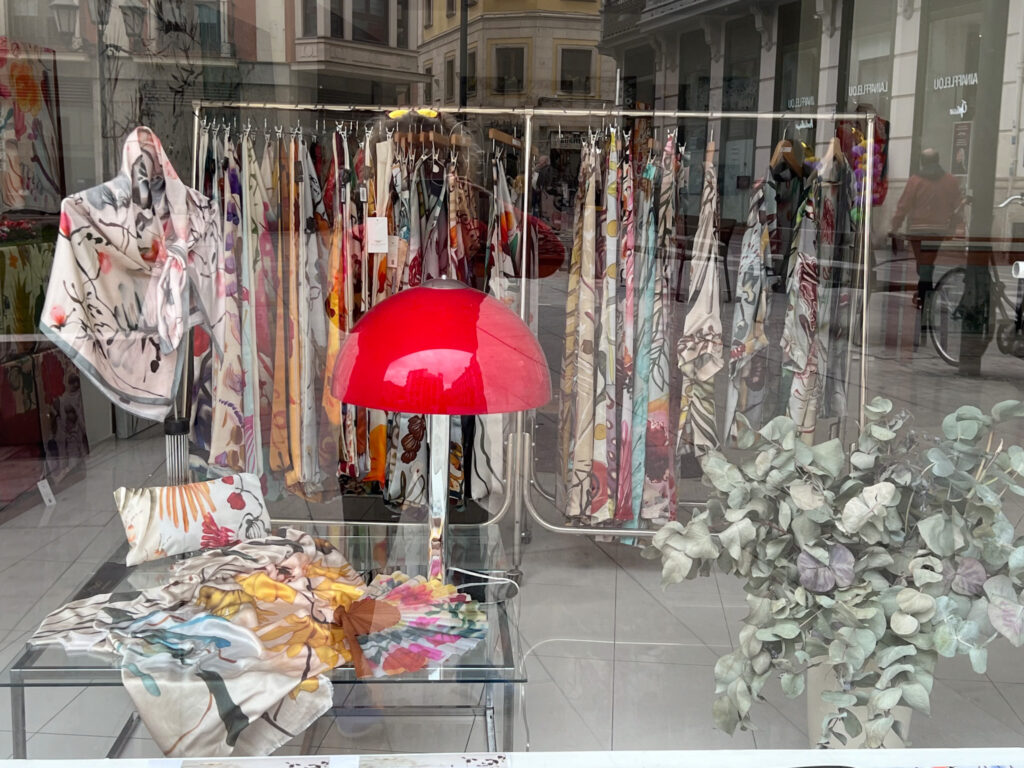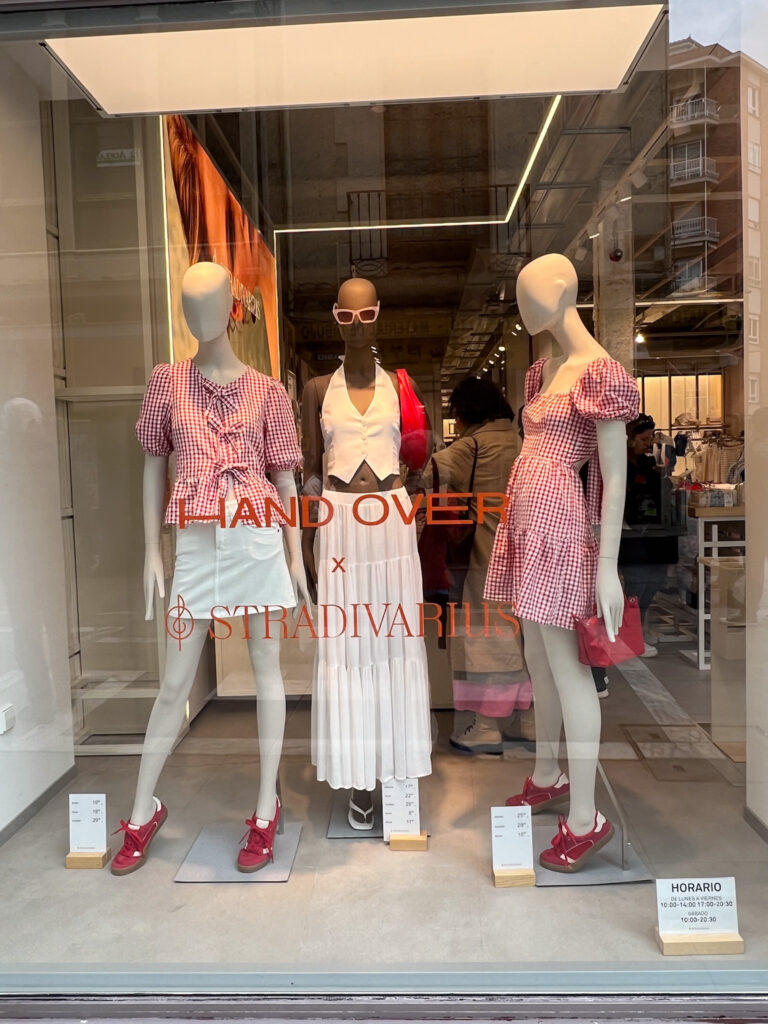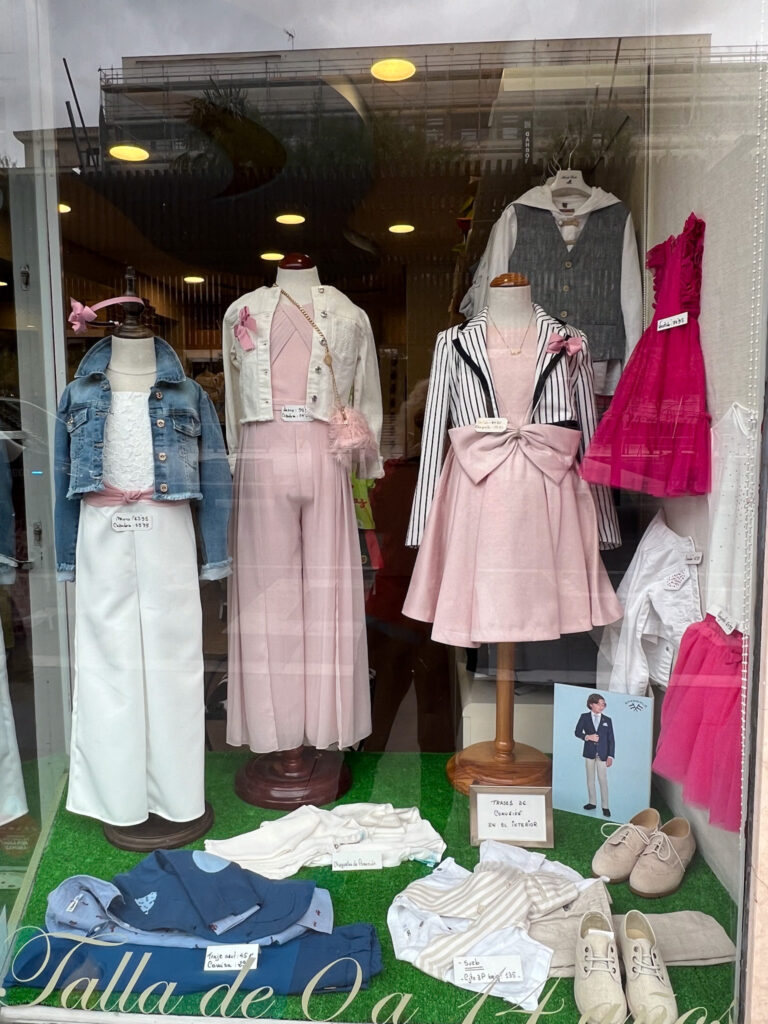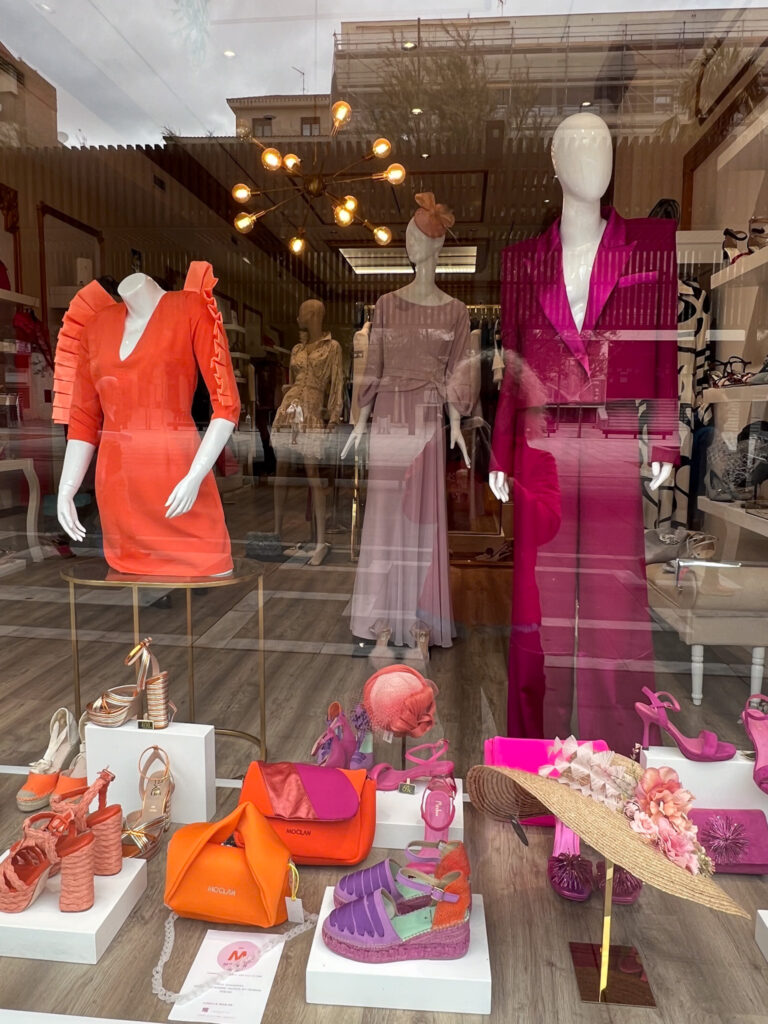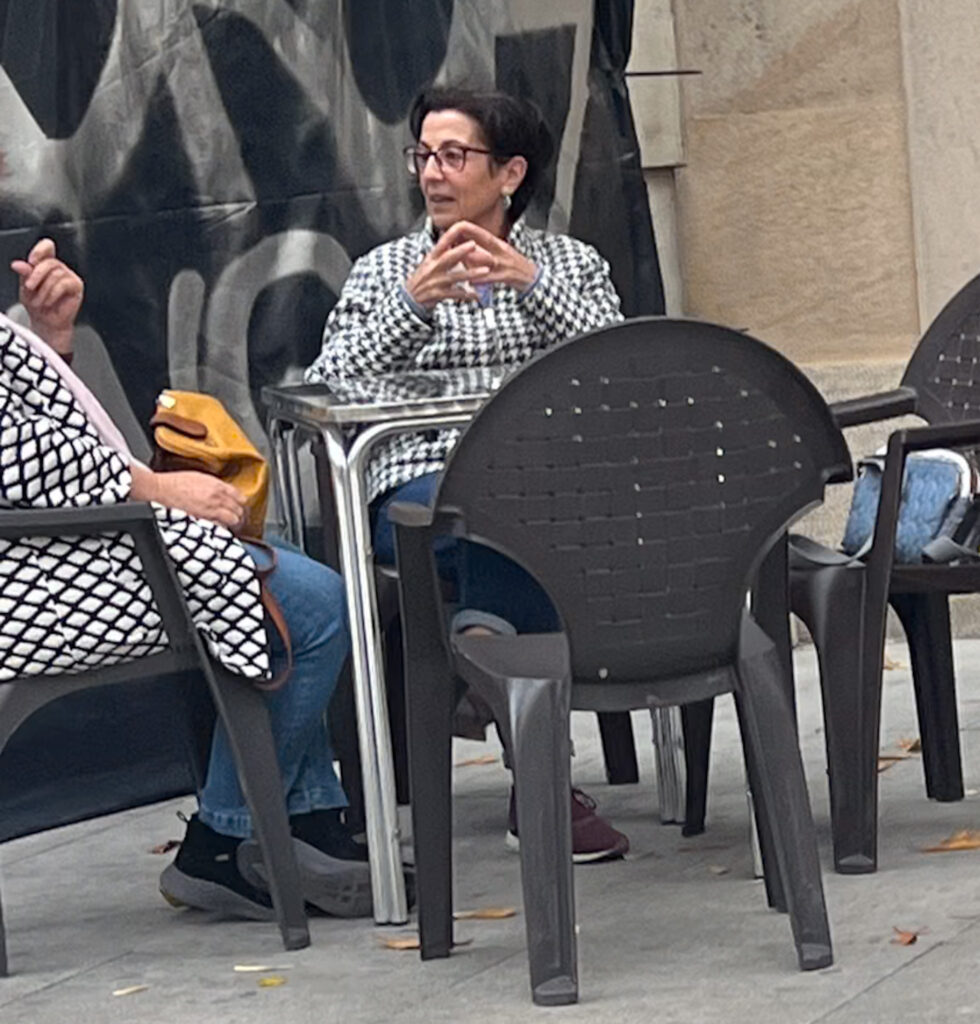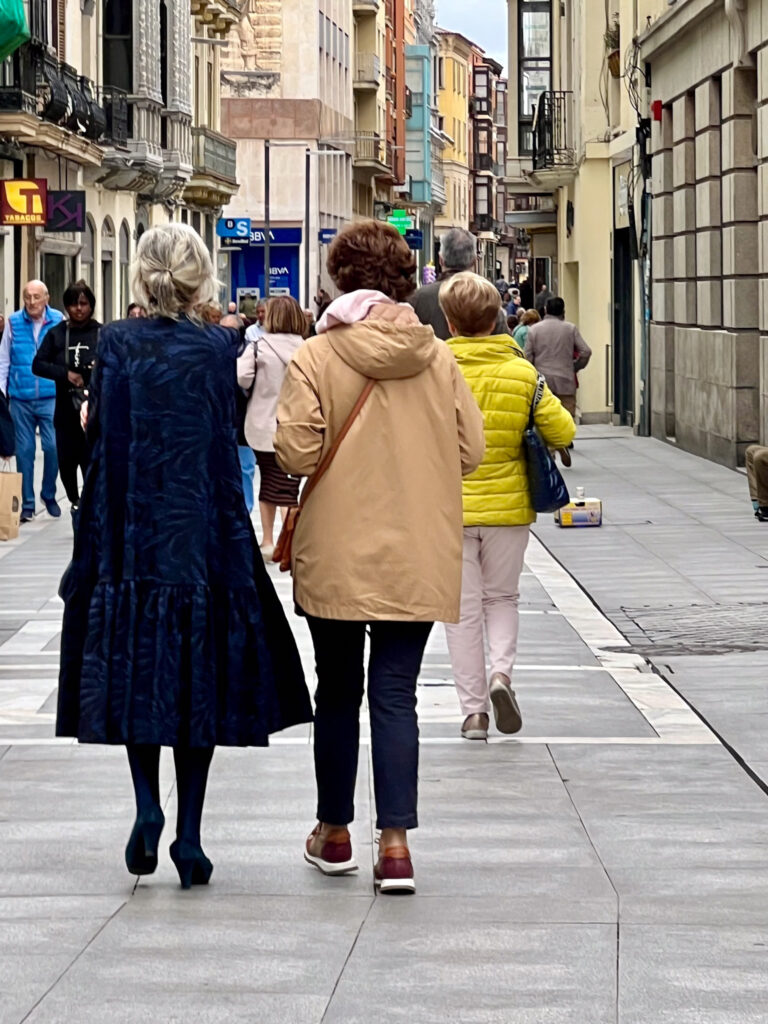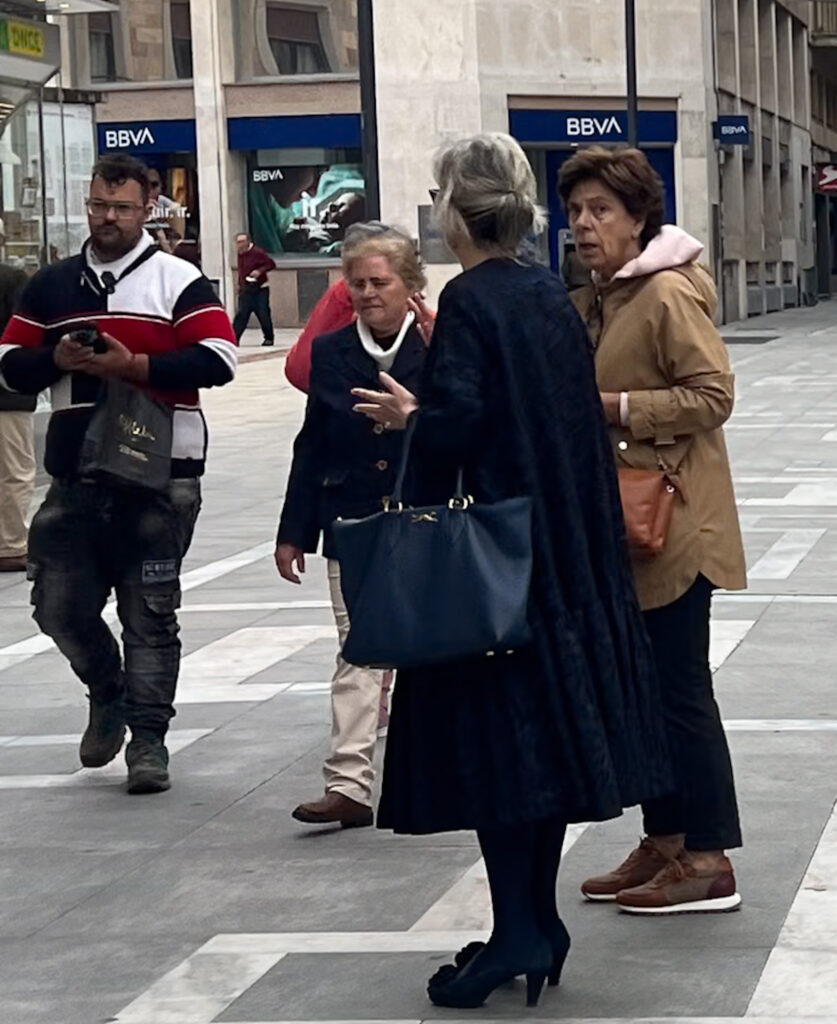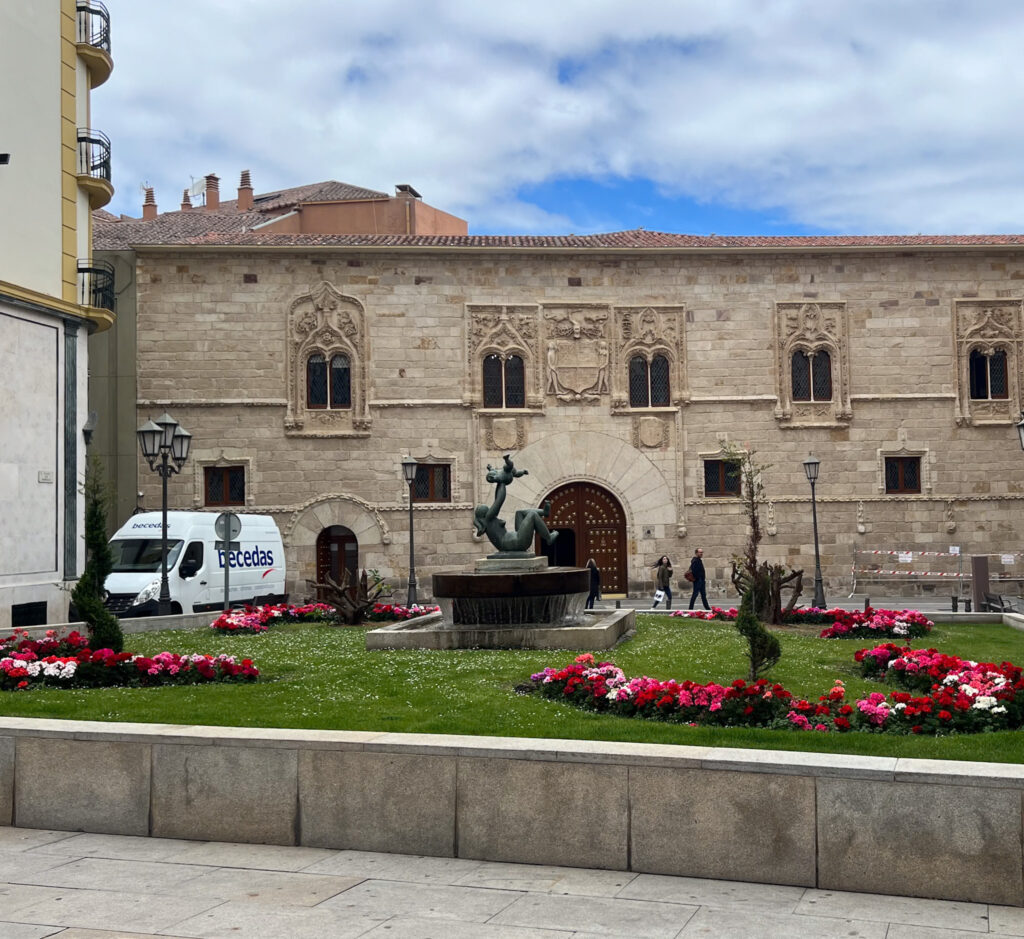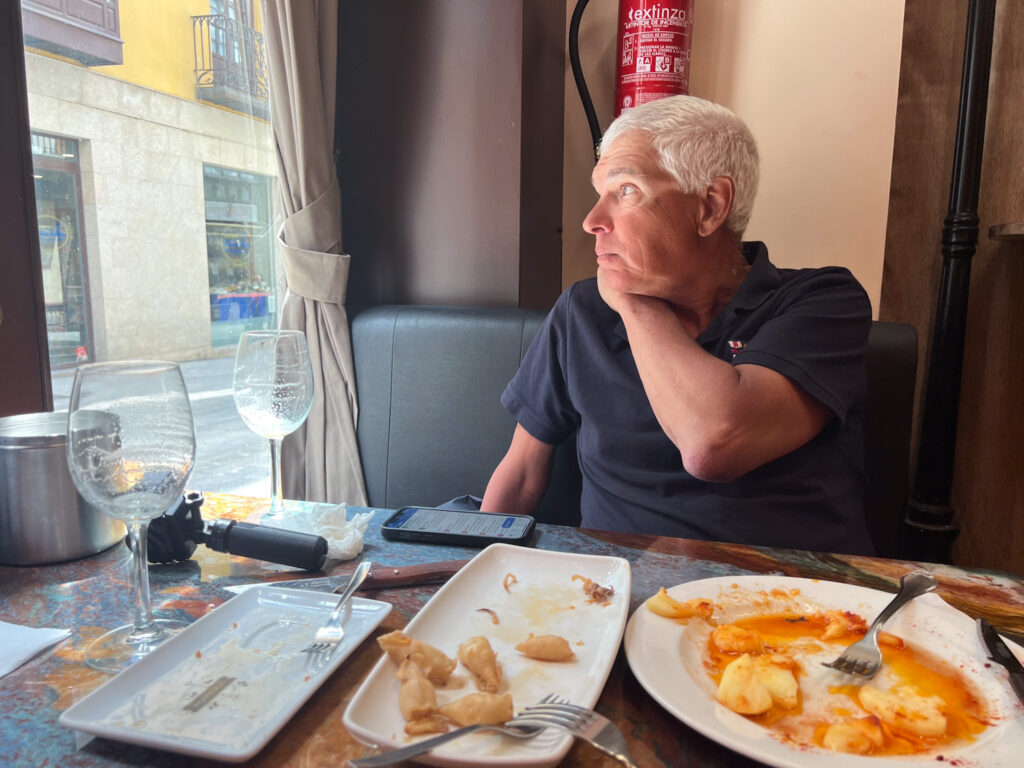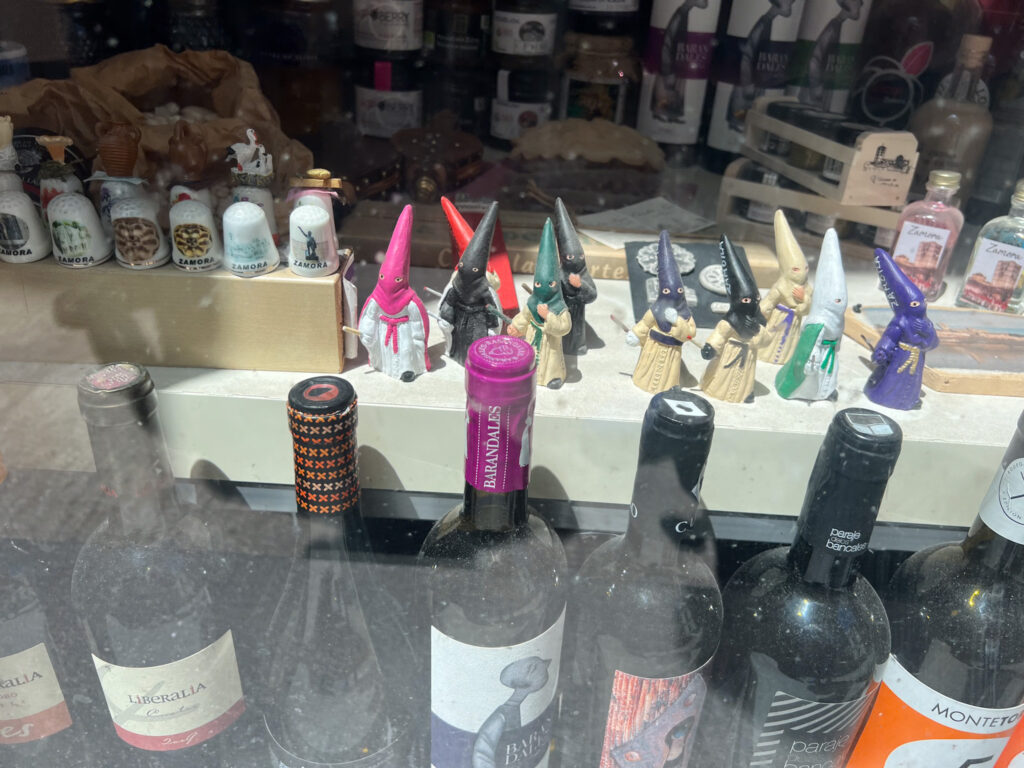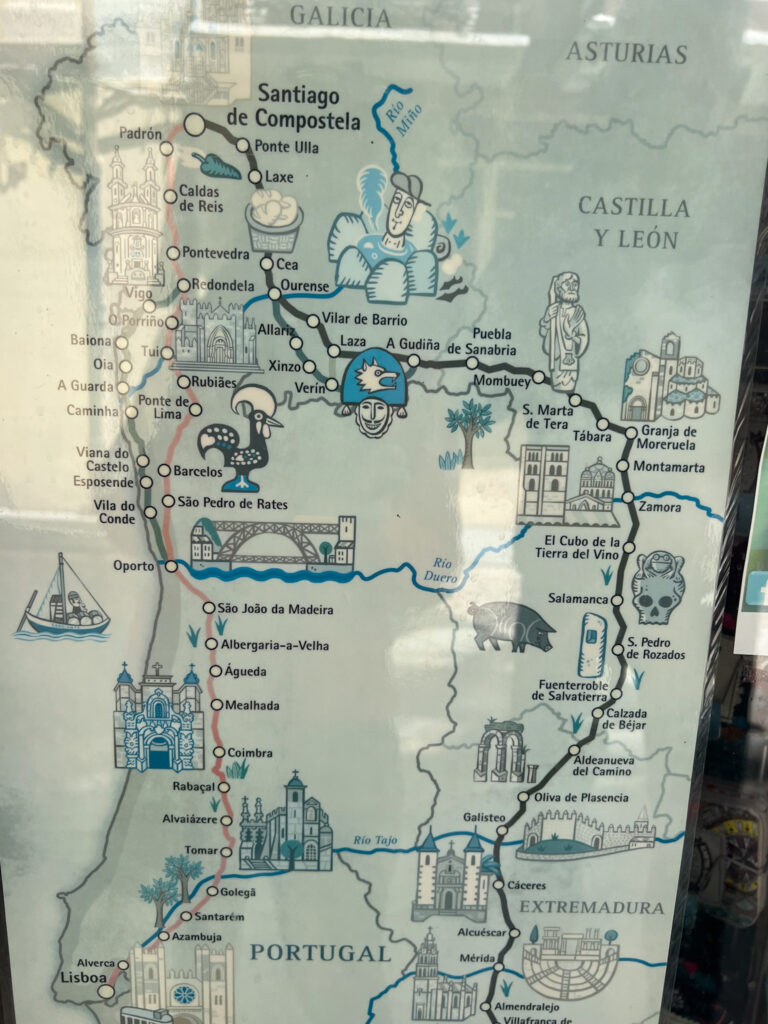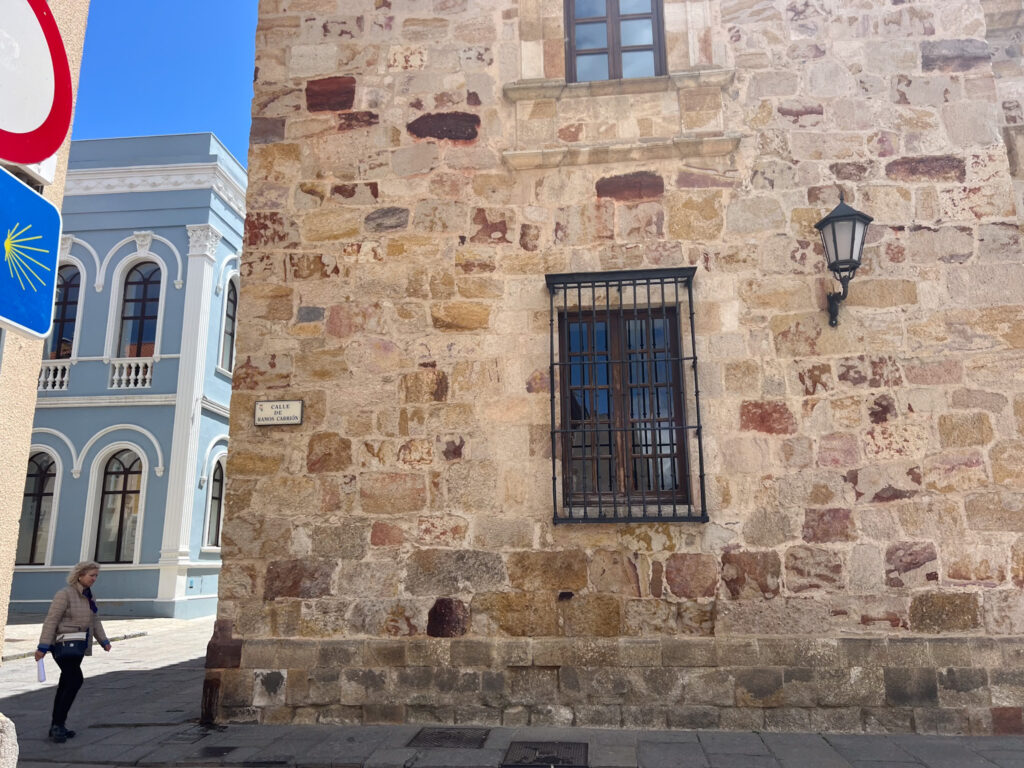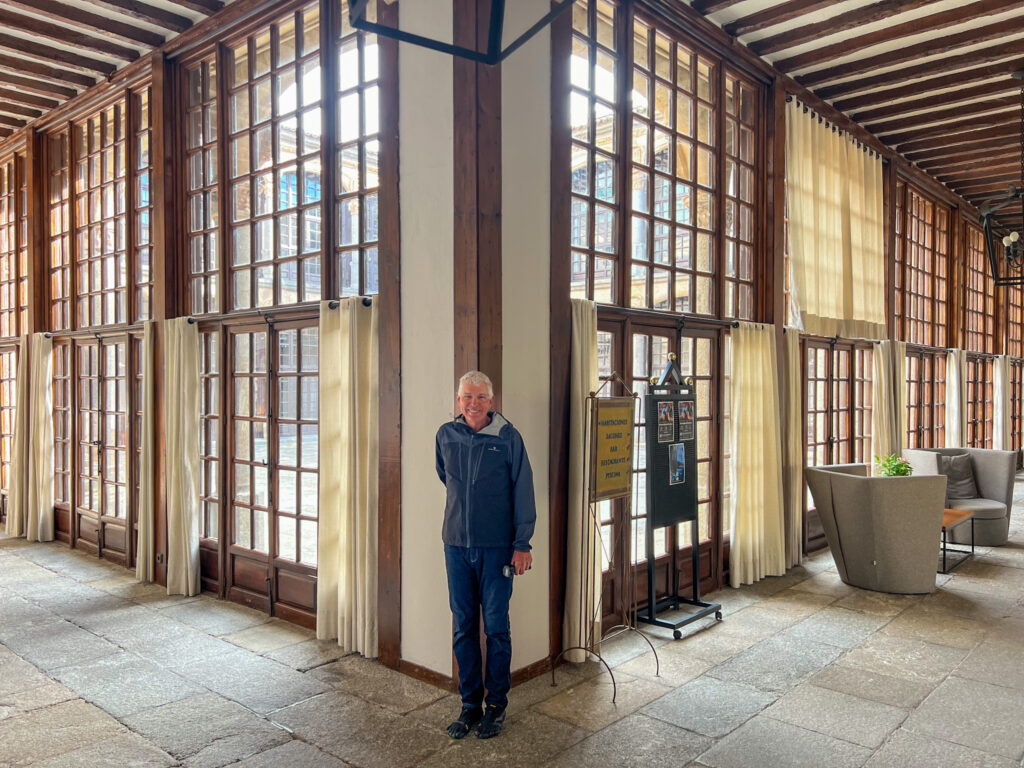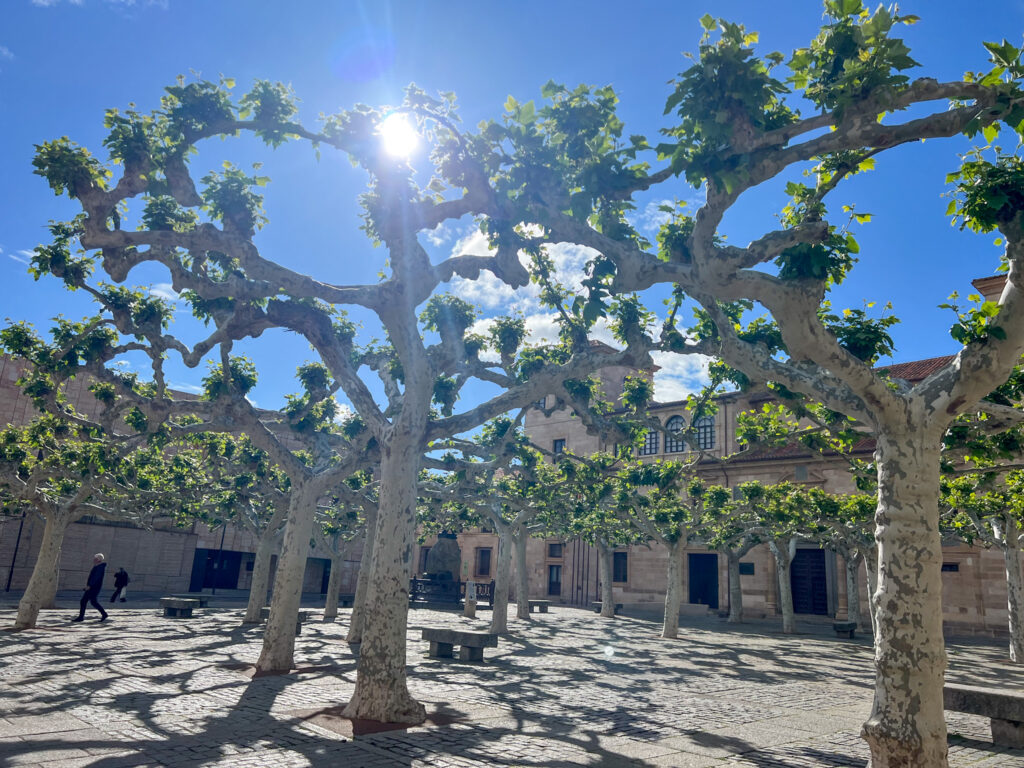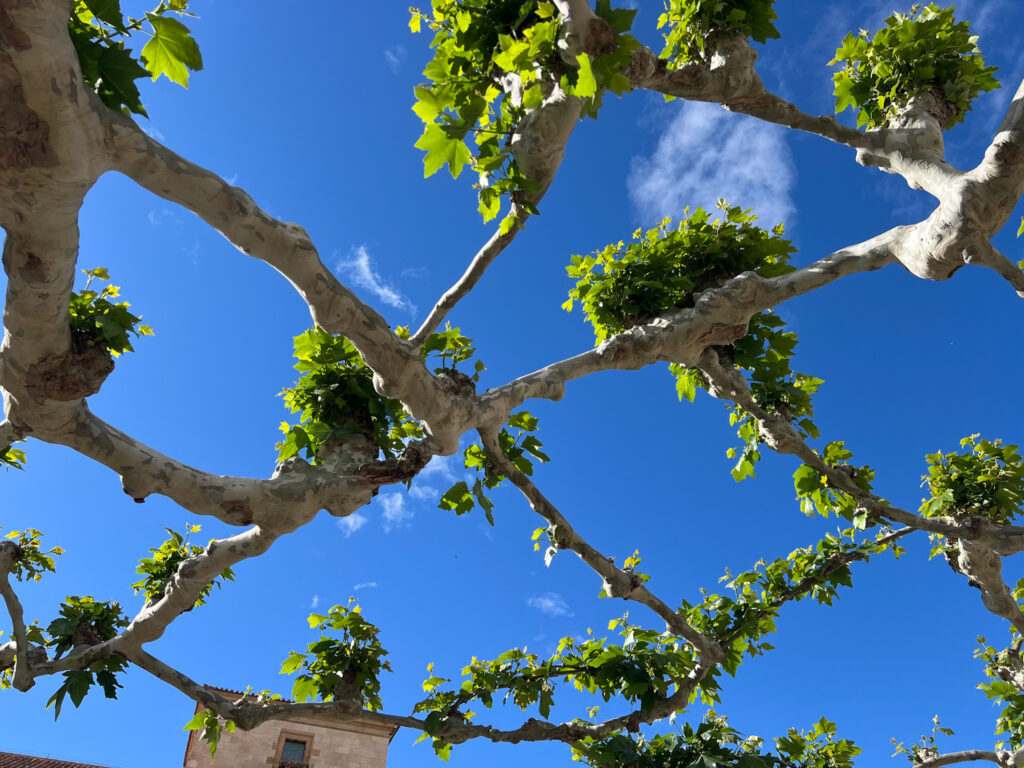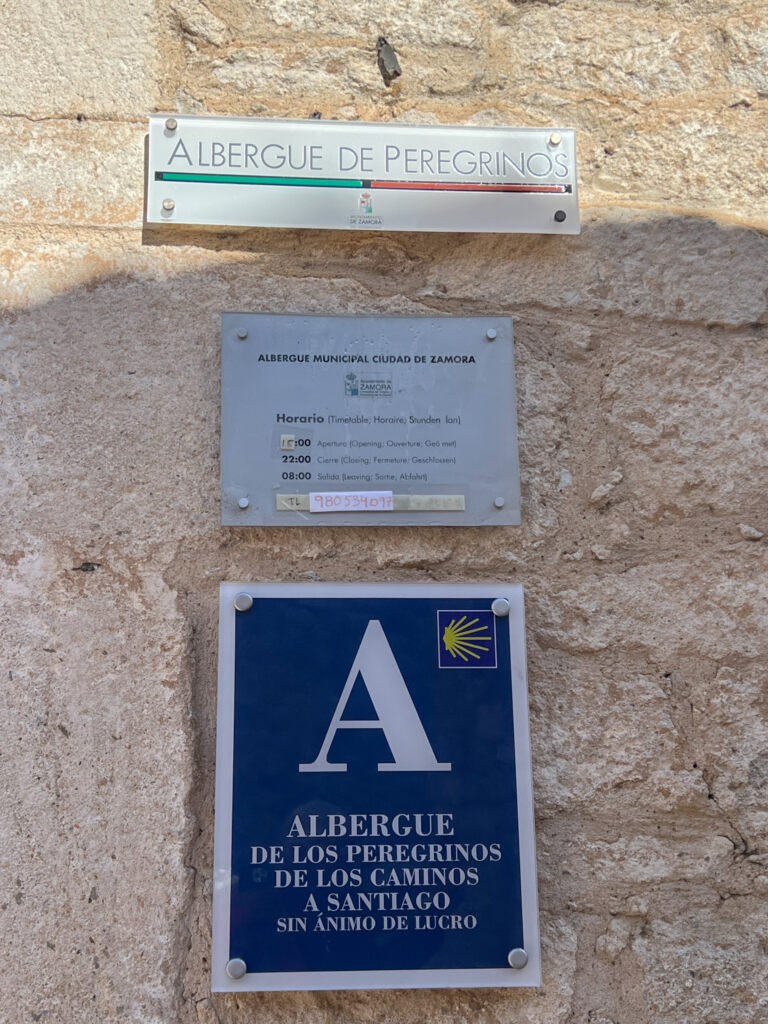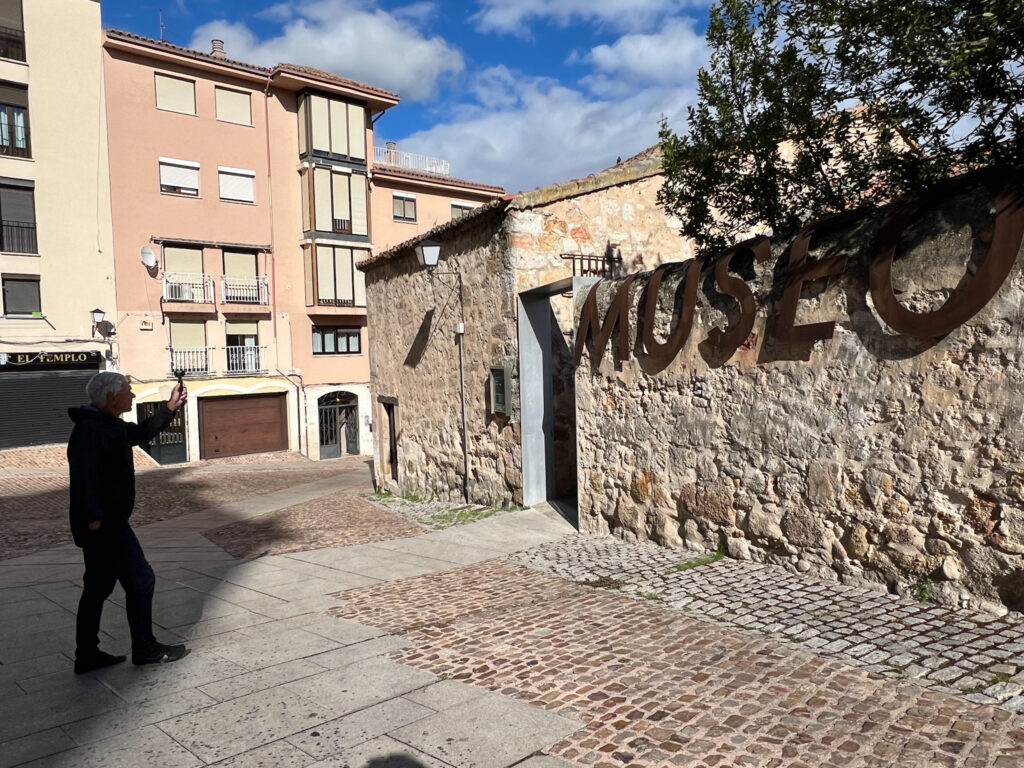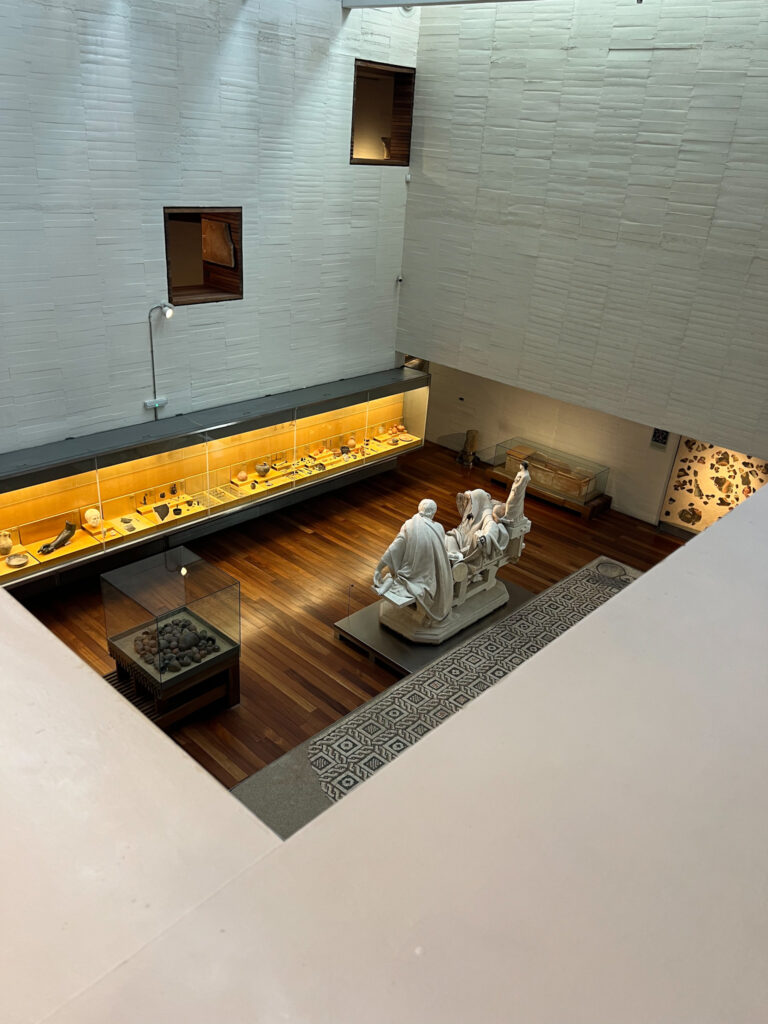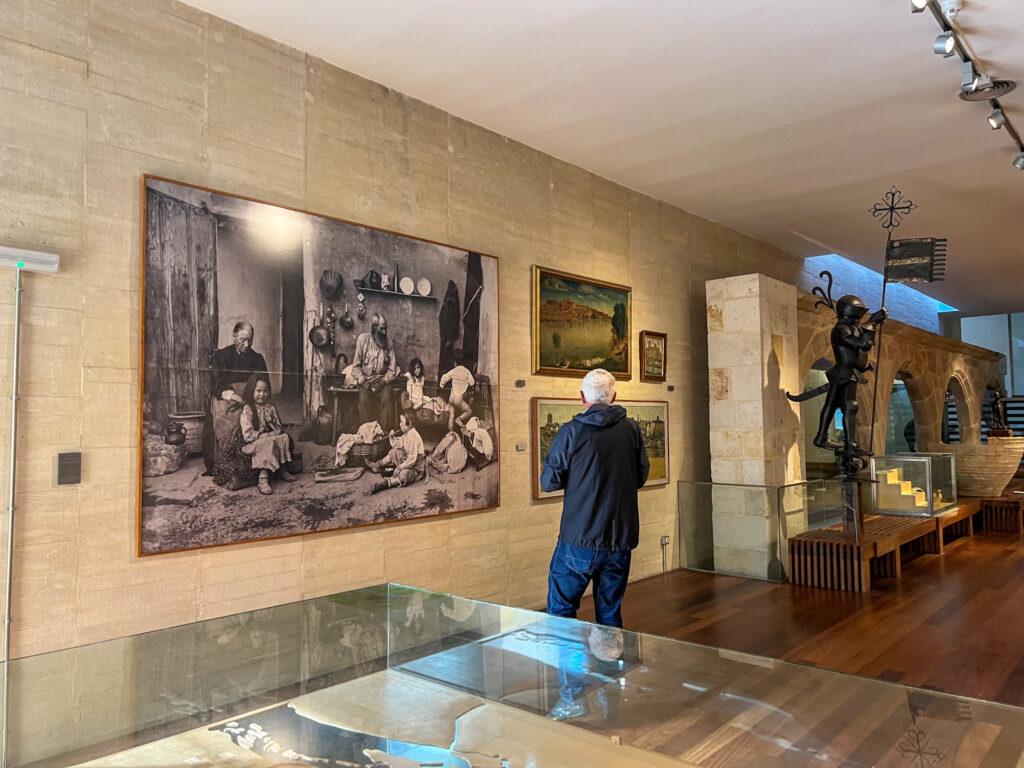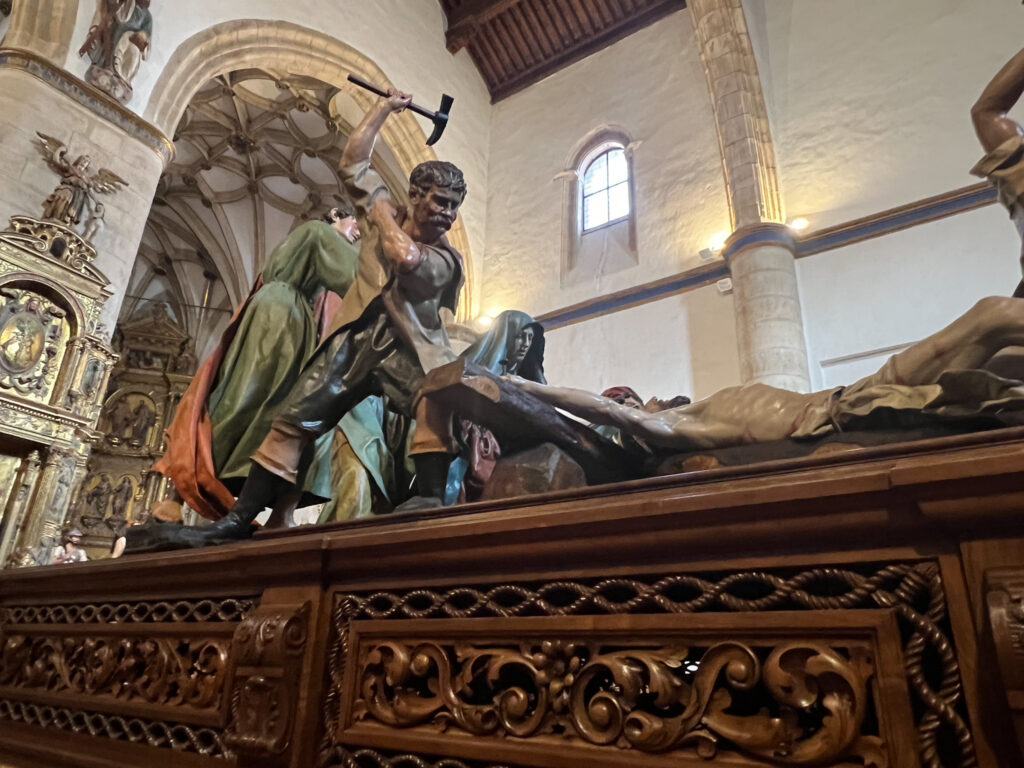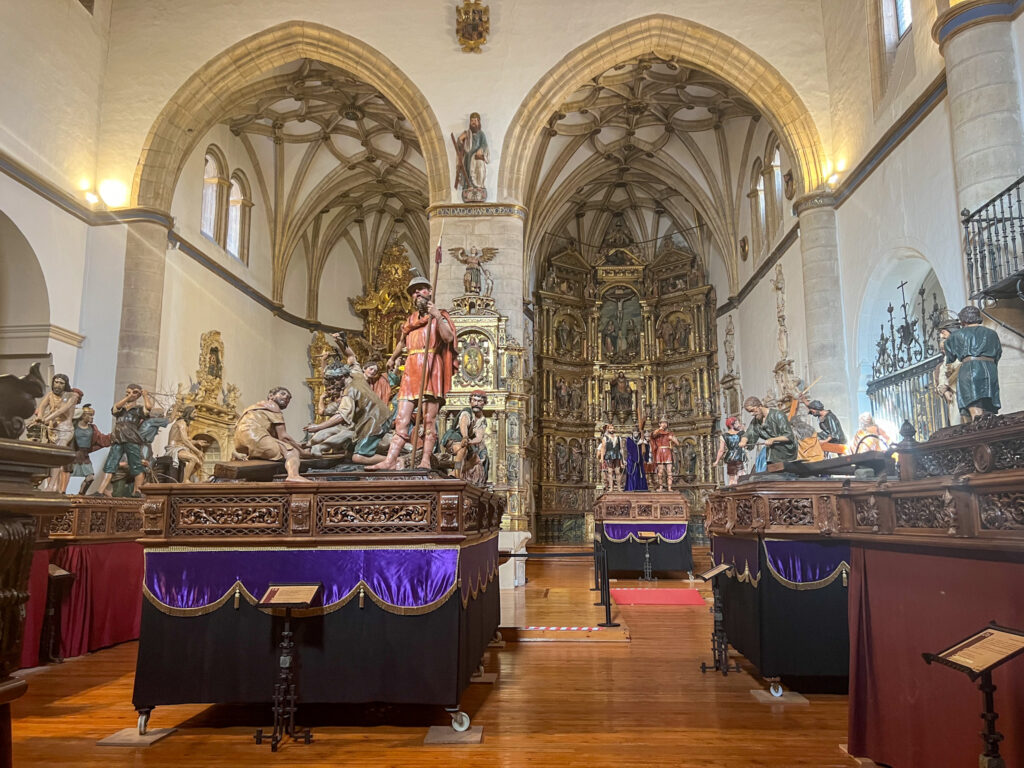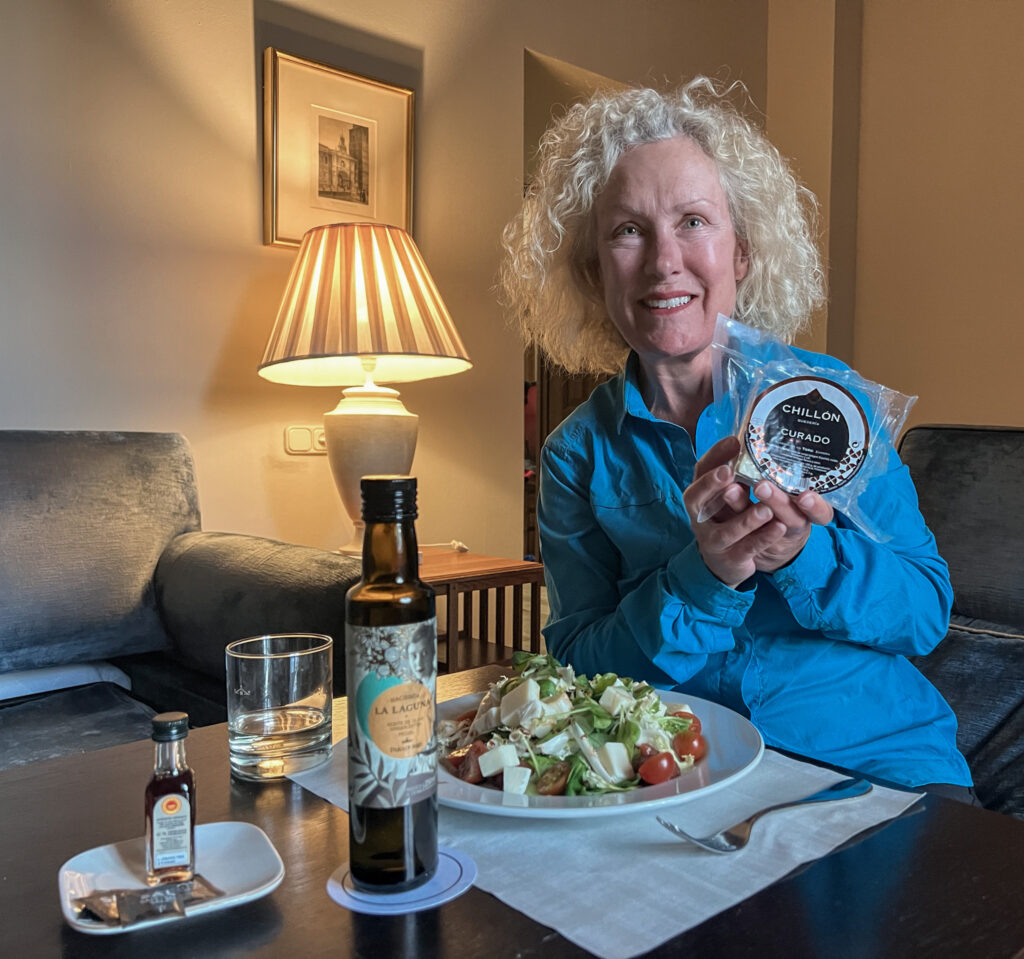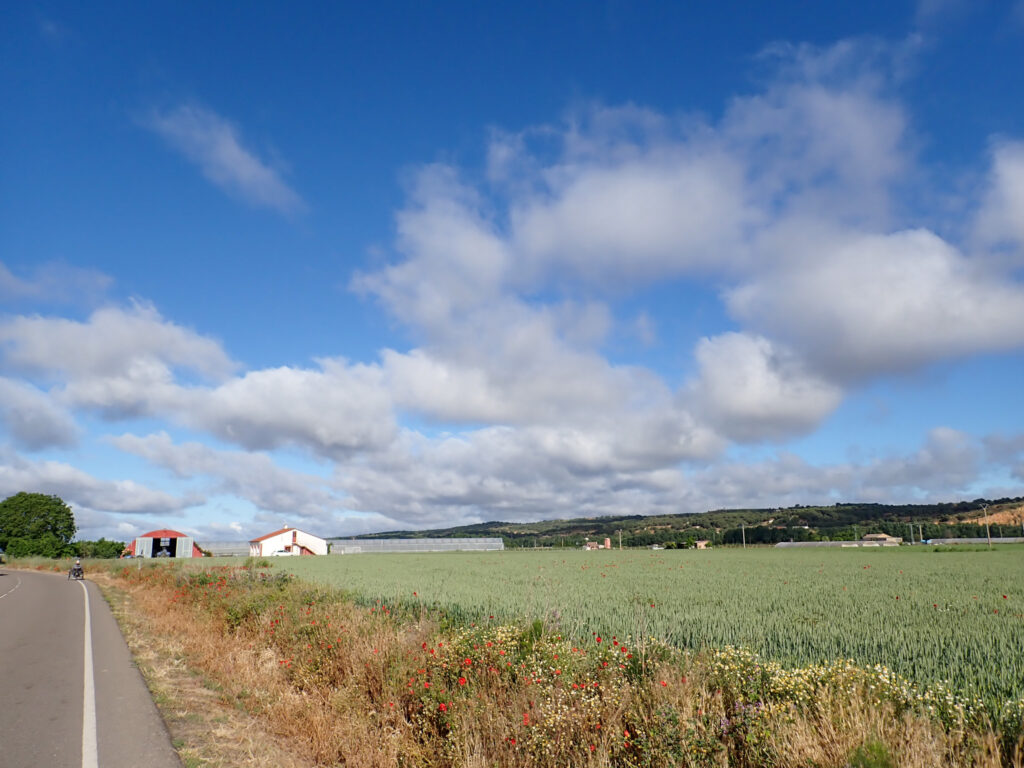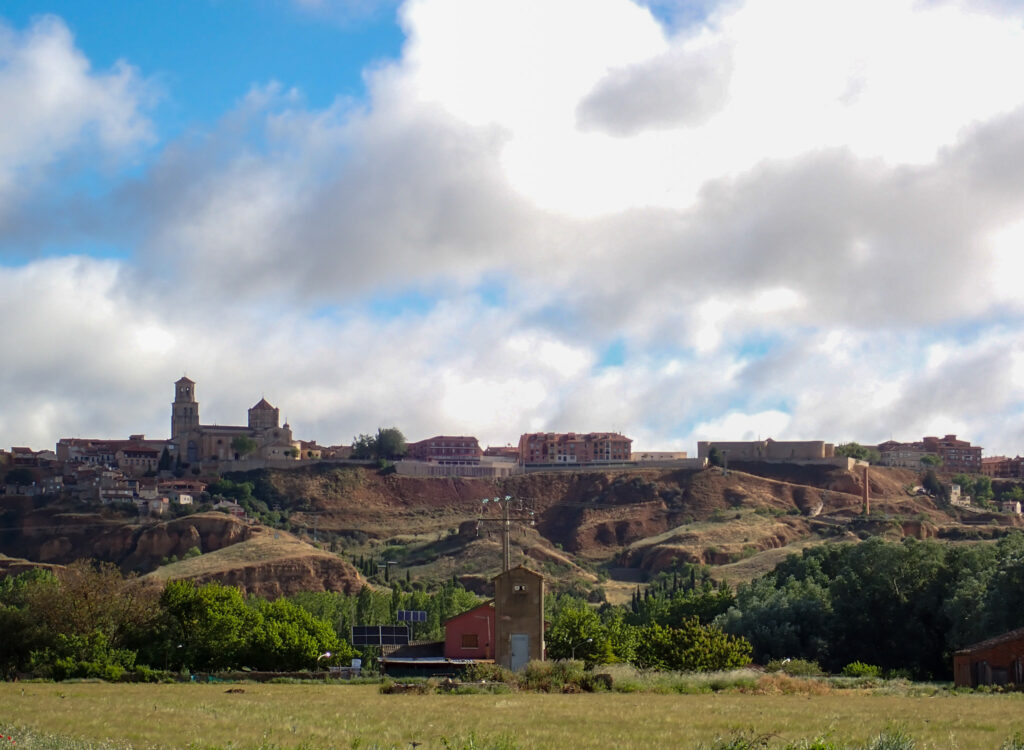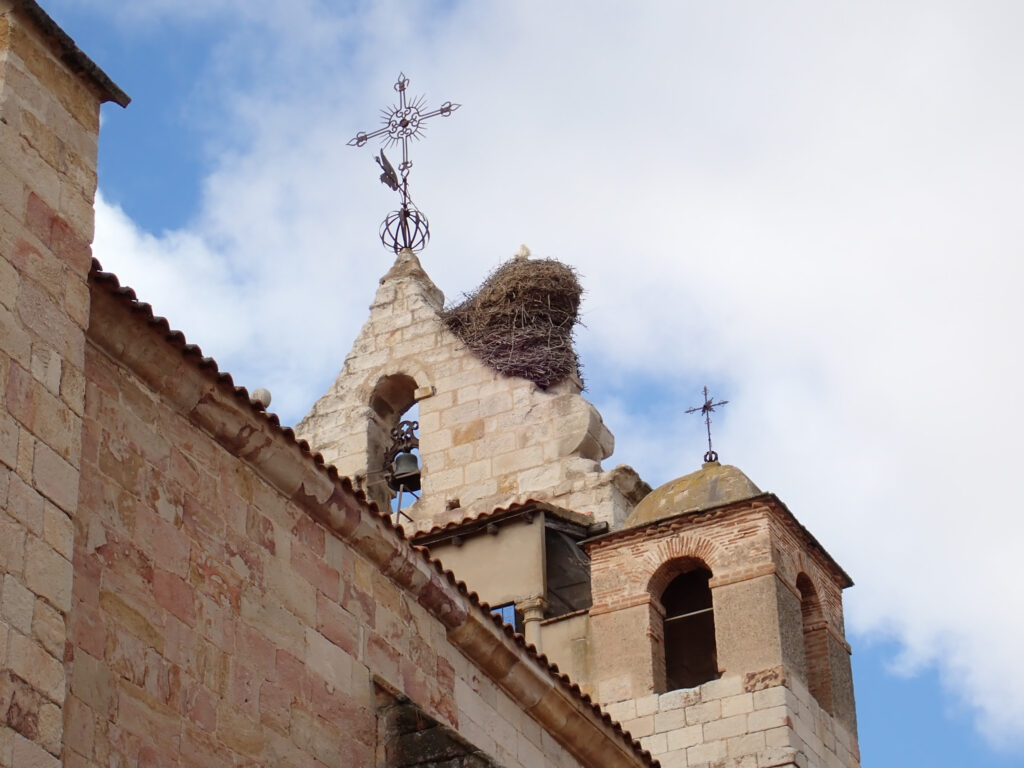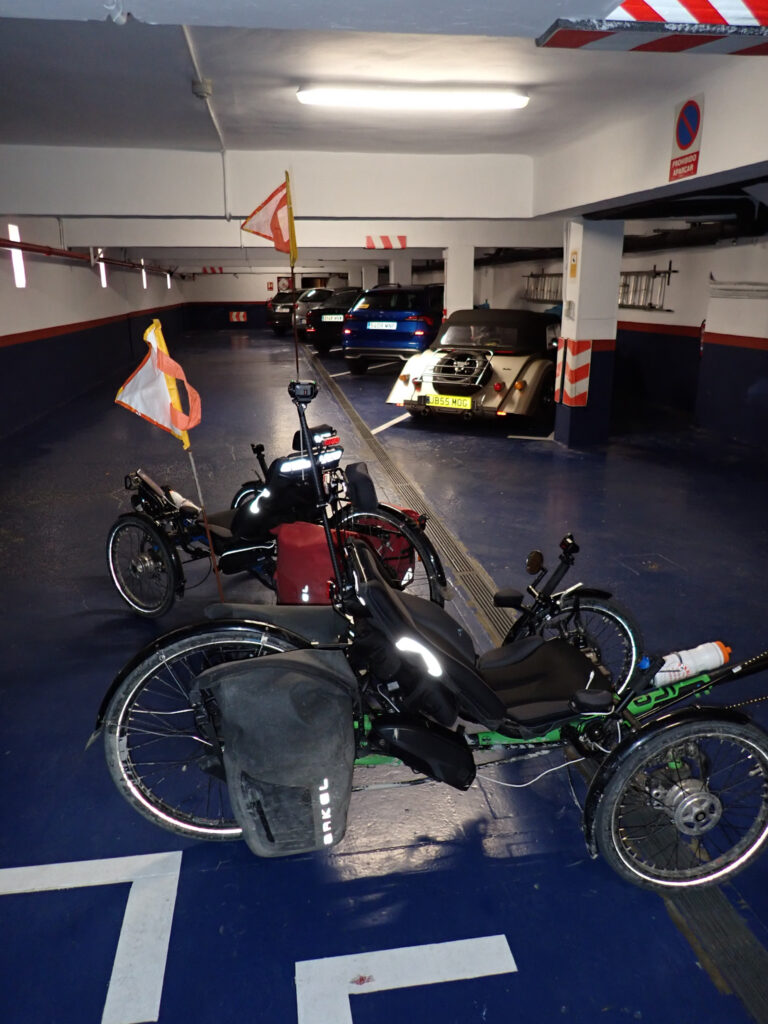Our ride from Toro to Zamora started with a treat: after a breakfast of Patti’s favorite treat, the Abuluelo cake filled with Nutella along with a fantastic coffee (see photo), we enjoyed a nice steep descent onto what would be a flat route of about 36 kilometres. Lots of stork nests on church roofs. Sometimes the parishioners have even built ‘cage supports’ to house the huge nests. The toughest part of this ‘easy’ day was the drop in temperature and unrelenting headwind.
Zamora is in the Castile and León region, so, prevalent is that Castilian soft ‘s’. (Think lisp.)
Toro is known for its fine vineyards, and we enjoyed a lovely Toro vintage this evening. The vineyards quickly changed to vegetable crops though during the ride to Zamora.
The ancient bridge we had planned to cross into the city was closed due to construction but this worked in our favour because we had a few kilometres to ride to get to the next bridge, admiring the beauty of the hilled city across the Rio Duero (it becomes the Douro River in Portugal) (and both the Duero and Douro regions yield beautiful wines). The route along the river was gorgeous. Manicured hedges, pedestrian walkways, gardens. Every day we are amazed by how the Europeans’ approach to urban design puts us Torontonians to shame.
We crossed the river on a new bridge, following a perfectly separated bike lane. We followed another beautiful cycling path into the old town, and then some windy, rabbit warren-y roads up, up, up to the plaza (square) where our hotel was. The square was filled with the ubiquitous Spanish Plane Trees, each one’s branches somehow grafted to the next, creating a network of green above, and interesting shadows, below. (See photo.)
We were happy to be allowed to put the bikes in the hotel’s very fancy indoor garage. When we came down the next morning, it was keeping company with a bunch of shiny motorcycles and a very posh British (I think) car. (See photo.)
We plugged in various charging devices, then hit the old town in search of a something hot to eat, to warm us up. Tapas – pulpo, calamari and deep fried pork rinds- filled the bill. A bit of window shopping (a pity, because it is a very tasteful city, as are its inhabitants!!!) and then promptly at 2 the city closed down for siesta – churches and museums included – so we headed back to the hotel, caught up on travel blog posts and photo deleting. The break was well timed because it absolutely poured while we were in our room!
When the rain had ended and siesta was over, we walked the city some more, heading down to the river, visiting an architecturally beautiful Museo de Zamora (built into a rock cliff) along the way. Trudging back up into the old city we saw an open door to an old church. What a surprise! The church is used as storage for the Semana Santa (holy week) parade floats (“tronos”). Each float features a beautifully rendered life-size depiction of an Easter scene, and each weighs about 3,000 kg. Each float is carried by 44 men, all crouched under the float in very close quarters, bearing the weight on wood beams wrapped in rags to cushion their poor shoulders! Most cities in Spain host a series of Semana Santa processions complete with these tronos, and “Nazarenos” (members of brotherhoods – “cofradias” – dating back to the Middle Ages, all wearing colourful capes and huge hooded cones on their heads to indicate their penitence for the sins of their forefathers during the Spanish Inquisition, and their own sins of the past year. (See photo of the Nazarenos sculpture, and of the baked figures in bakeries.)
We also noticed the familiar Camino symbol – the yellow scallop shell on a blue background – on an albergue door and were surprised to discover that there is a Camino Zamarano Portugues which runs 98 to Zamoro and then continues 184 more very strenuous and mostly unsupported kilometres to arrive in Santiago with the rest of the pilgrims travelling their various routes. This is a camino that is not for the faint of heart.
We picked up some local sheep’s cheese and bread and wine on our walk back to the hotel, placed an order with the front desk for a huge salad from the hotel’s fancy restaurant (room service) and, basically after hoovering that meal, called it a night.
